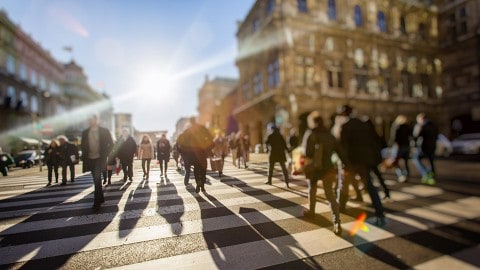Prior to the introduction of vaccines, physical distancing was the major preventative measure to slow the spread of COVID-19. While necessary to protect the physical health of people and communities, for many people the resulting social isolation has taken a toll on mental health.
A national survey project looks at patterns of social isolation in the U.S. since the beginning of the pandemic and whether there is a strong association between social isolation and moderate to severe depressive symptoms.
In an analysis of 15 months of survey data, the project found that while the number of Americans suffering from social isolation brought on by the pandemic has started to decline, unemployed and low socioeconomic status respondents have barely begun to recover from the increases in social isolation suffered earlier in the pandemic.
“The data make clear that the effects of the pandemic are far from over and continue to be endured more by those with fewer resources,” said political scientist James Druckman, the Payson S. Wild Professor of Political Science in the Weinberg College of Arts and Sciences and associate director of the Institute for Policy Research at Northwestern.
Druckman is one of the researchers involved in the university consortium The COVID States Project, which includes Northwestern, Northeastern, Harvard and Rutgers experts in computational social science, network science, public opinion polling, epidemiology, public health, communication and political science.
To understand the impact the pandemic has had on social isolation in the U.S., the researchers analyzed pandemic data collected between April 2020 and June 2021 to identify differences among population subsets and whether there is an association between social isolation and rates of depression.
The researchers surveyed more than 185,000 individuals from all 50 states during 12 survey intervals and weighted data to represent state and U.S. population demographic characteristics, including race/ethnicity, age, gender, education, and residence in urban, suburban or rural areas.
The study defines social isolation as having one or fewer social connections that can be counted on to provide support in four relationship categories: caring support (providing care during an illness), financial support (helping with a loan), emotional support (having someone to talk to about a problem or when feeling sadness or depression) or employment support (helping to find a job).
The results show the percentage of socially isolated respondents declined most among those with high income and education. The average gaps between the lowest and highest income respondents are 15 percentage points for caring and financial support, 13 points for emotional support and 19 points for employment support.
Higher income respondents became less socially isolated across all four types of relationship categories with noteworthy differences between low and high earners for financial and employment support.
The degree of social isolation among respondents earning $25,000 or less did not improve between the first waves of the pandemic and June 2021. Respondents reporting a lack of financial support relationships remained the same at 51% while social isolation around employment support increased to 60% from 58%.
In contrast, respondents with an income of $150,000 or more per year reached levels of social isolation relatively close to the lowest values recorded over the course of the pandemic. Of the respondents in this group, 34% were socially isolated regarding financial support in June 2021, compared to 30% roughly one year ago. For employment support, these values were 35% and 31%, respectively.
“Those with more resources are feeling less isolated which, in turn, could enable them to be more productive,” Druckman said. “The fear is this could exacerbate inequalities further. It makes the necessity of post-pandemic assistance clear.”
Other highlights of the survey include:
- The researchers observed a relatively faster drop in isolation among religious and older Americans.
- Men are substantially more isolated than women with respect to emotional support but about equal in terms of economic support.
- White respondents are more socially isolated with respect to economic support but less isolated emotionally relative to other racial/ethnic groups.
- There is a strong association between social isolation (specifically, in terms of relationships available for emotional support) and moderate to severe depressive symptoms.
Read the full report here.

